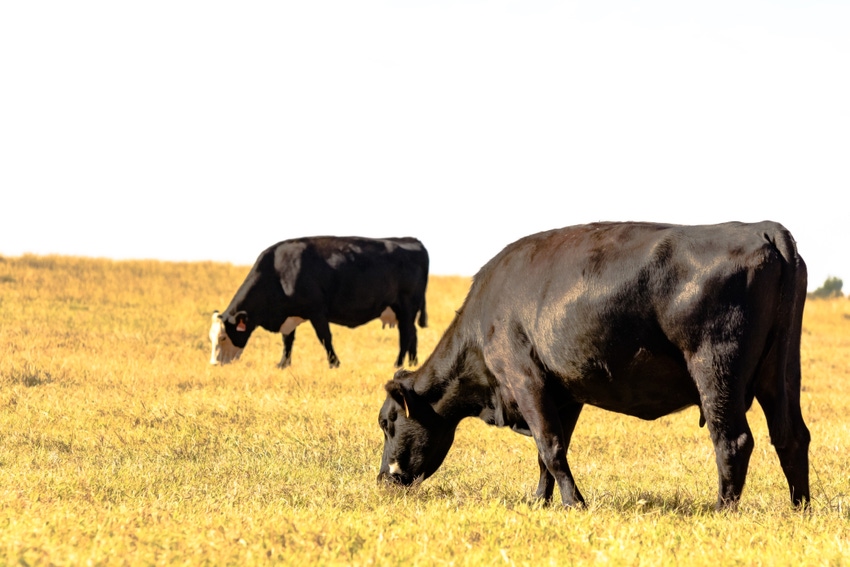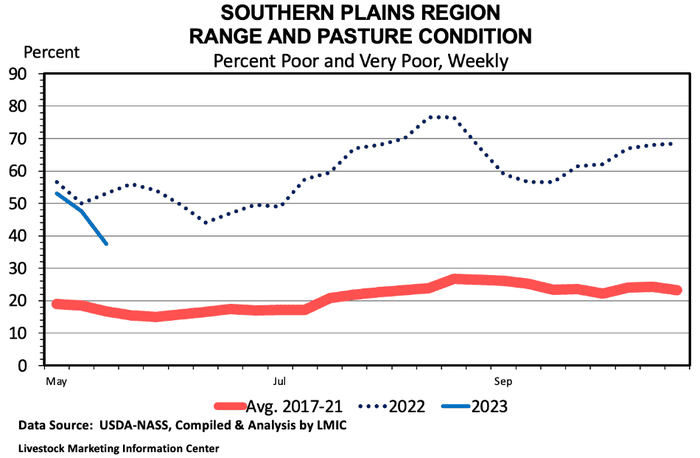June 1, 2023

By Josh Maples, Mississippi State University
USDA-NASS begins releasing pasture and range conditions in May each year and the charts below show conditions in the Southeast and Southern Plains regions as compared to a year ago and the five-year average from 2017-2021. These charts show the percentage of range and pasture that is classified as “poor” or “very poor.”


The percentage of poor pasture in the Southeast is around 10 percent which is similar to a year ago and also similar to the five-year average. The Southern Plains region has been an area worth watching as drought has been a theme in much of that area for the past few years. Drought impacts show up in the range and pasture conditions as the region was nearly 40 percent poor or very poor. However, the Southern Plains graph does show some improvement in recent weeks thanks to some much-needed rain during mid-May.
The current drought outlook is for drought to remain but improve in most of the Plains region that is currently in a drought designation. The outlook is less positive for the western half of Texas and eastern New Mexico where drought conditions are expected to persist through the summer.
Cattle prices have continued on an upward trend. The market report table below shows prices in the Southeast are up approximately 40 percent above a year ago. We are in an interesting stage of the cattle cycle when supplies get tight and market dynamics shift to incentivize more production. While the cattle industry is incredibly complex and interconnected with multiple marketing periods for any single animal (e.g. calf, stocker, feeder, fed cattle), increased production of cattle ultimately has to happen at the cow-calf sector. Calf prices in the Southern Plains region were above $270 (graph below) last week. It will be especially interesting to track calf prices as we approach late summer and early fall when many cow-calf producers typically sell their spring-born calves.

You May Also Like




